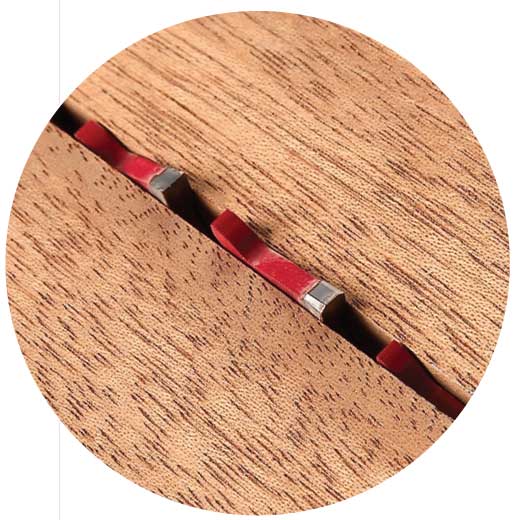We may receive a commission when you use our affiliate links. However, this does not impact our recommendations.
Q:
I use my jointer to clean up sawn edges before glue-up. The results are great except when I try to joint figured wood. Any suggestions?
A:
Jointing highly figured wood often leaves nasty tear-out. It’s times like these that a tablesaw and a specialized blade called a glue-line rip blade come in handy. A glue-line rip blade produces a much smoother edge than even the best 40-tooth combination blade can.
Glue-line rip blades are designed and used differently than standard rip blades. General-purpose rip blades are made for fast, rough cuts. Typically, they have 24 flatground teeth. A typical glue-line rip blade, on the other hand, has 30 teeth with every other tooth having a “triple-chip grind.” The triple-chip tooth hogs out most of the material and the flat tooth cleans up what’s left. This produces an ultra-smooth cut that’s ready for glue-up.
You set up a glue-line rip blade differently than you do a typical blade (see photo, left). You’ll get the best results by feeding the stock at a slow, steady rate.
The glue-line rip blade should be set so no more than one-quarter of the height the tooth is above the wood.
This story originally appeared in American Woodworker July 2006, issue #122.
Here are some supplies and tools we find essential in our everyday work around the shop. We may receive a commission from sales referred by our links; however, we have carefully selected these products for their usefulness and quality.











